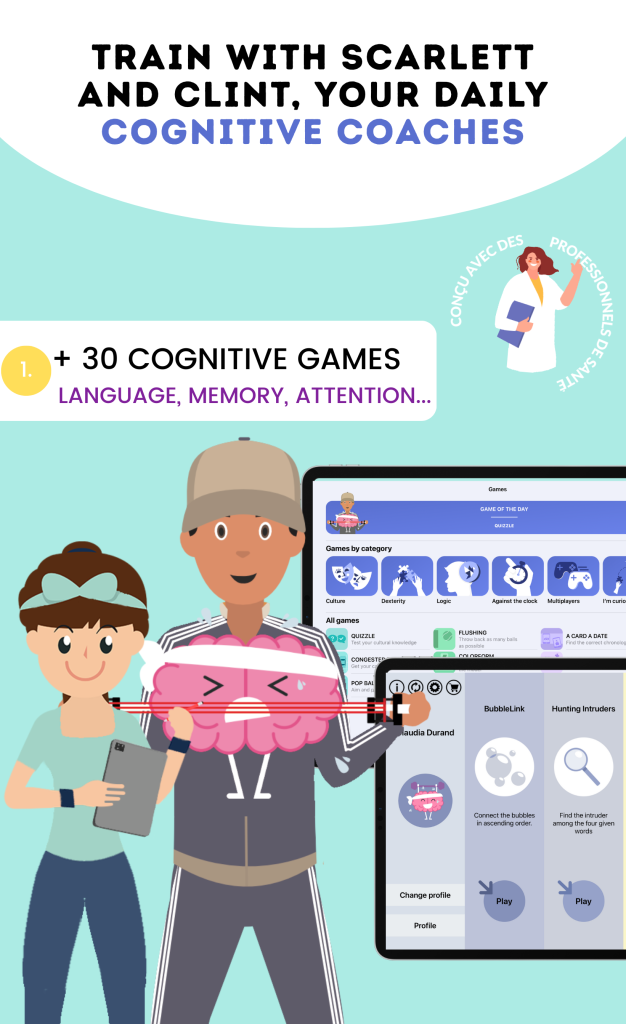The appropriate care and support for elderly people are of paramount importance to ensure their well-being and quality of life. Elderly people may face numerous physical and cognitive challenges that require special attention. This is where adapted tools come into play. These tools, specially designed to meet the needs of elderly people, can help caregivers provide effective and efficient care. In this article, we will explore the different types of adapted tools available for elderly care, as well as the importance of training caregivers in their use. We will also discuss the benefits of these tools for elderly people, as well as considerations to take into account when choosing adapted tools based on the specific needs of each individual.
The Challenges of Caring for Elderly People: How Adapted Tools Can Help Caregivers
Elderly people may face numerous physical and cognitive challenges that can make caregiving difficult for caregivers. Physical limitations such as loss of mobility, muscle weakness, and decreased endurance can make it difficult for elderly people to perform daily tasks such as moving around, bathing, and dressing. Additionally, cognitive issues such as memory loss, confusion, and difficulty communicating can make caring for elderly people even more complex.
Adapted tools play an essential role in providing effective and efficient care to elderly people. These tools are specifically designed to meet the unique needs of elderly individuals and help them overcome their physical and cognitive limitations. For example, communication aids can help elderly people with cognitive disorders express their needs and preferences. Similarly, mobility aids such as walkers and wheelchairs can help elderly people move around safely and independently. By providing caregivers with the appropriate adapted tools, we can improve the quality of care for elderly people and enable them to live a more autonomous and comfortable life.
Types of Adapted Tools for Elderly Care
There is a wide variety of adapted tools available for elderly care. These tools are designed to meet different needs, such as communication, mobility, fall prevention, comfort, and convenience. Here are some examples of adapted tools for each category:
– Communication aids: These tools include communication boards, speech-generating devices, and mobile applications that help elderly people with cognitive disorders communicate their needs and preferences.
– Mobility aids: These tools include walkers, canes, wheelchairs, and electric scooters that help elderly people move around safely and independently.
– Fall prevention tools: These tools include grab bars, handrails, non-slip mats, and safety poles that help prevent falls among elderly people.
– Comfort and convenience aids: These tools include adjustable beds and chairs, smart home systems for safety and convenience at home, as well as personal care tools such as bathing and grooming aids.
The Importance of Training Caregivers in the Use of Adapted Tools
It is essential to train caregivers in the use of adapted tools to ensure the safety and comfort of elderly people. Adapted tools can be complex and require proper training to be used correctly. Caregivers need to learn how to use and maintain these tools to avoid injuries and accidents. For example, incorrect use of a walker can lead to a fall or injury for an elderly person. Similarly, incorrect use of a communication device can lead to confusion or frustration for an elderly person with cognitive disorders.
By training caregivers in the use of adapted tools, we can ensure the safety and comfort of elderly people. Caregivers need to learn the best practices for using the tools, as well as the safety measures to take to prevent accidents. They should also be aware of the individual needs and preferences of each elderly person in order to choose the most suitable adapted tools for their specific needs.
The Benefits of Adapted Tools for Elderly People: Increased Autonomy and Comfort
Adapted tools offer numerous benefits to elderly people. By providing them with the appropriate tools, we can improve their quality of life and enable them to live more autonomously and comfortably. Here are some of the benefits of adapted tools for elderly people:
– Improved quality of life: Adapted tools can help elderly people perform daily tasks more easily, which can enhance their overall quality of life. For example, a wheelchair can allow an elderly person to move freely and participate in social activities.
– Increased independence and self-esteem: Adapted tools can help elderly people maintain their independence and self-esteem. For example, a communication device can help an elderly person with cognitive disorders express their needs and preferences, giving them a sense of autonomy and empowerment.
Choosing Adapted Tools Based on the Specific Needs of Elderly People

It is important to choose adapted tools based on the specific needs of each elderly person. Every individual has unique needs and preferences, and it is essential to take them into account when selecting adapted tools. It is also important to consult healthcare professionals, such as occupational therapists and physiotherapists, for advice on the most suitable adapted tools for each situation.
When choosing adapted tools, it is important to consider the physical and cognitive limitations of the elderly person, as well as their personal preferences. For example, if an elderly person has mobility issues, a walker or wheelchair may be more appropriate. On the other hand, if an elderly person has communication problems, a communication device may be more useful.
Adapted Tools to Improve Communication with Elderly People with Cognitive Disorders
Elderly people with cognitive disorders may struggle to communicate their needs and preferences. Adapted tools can help facilitate communication with these individuals and improve their quality of life. Here are some examples of adapted tools to improve communication with elderly people with cognitive disorders:
– Memory aids: These tools include calendars, visual reminders, and mobile applications that help elderly people remember daily tasks and appointments.
– Visual aids: These tools include images, symbols, and pictograms that help elderly people understand and communicate their needs and preferences.
– Hearing aids: These tools include hearing aids and sound amplifiers that help elderly people hear and understand conversations.
Adapted Tools to Facilitate Mobility for Elderly People
Mobility is an essential aspect of daily life for elderly people. Adapted tools can help facilitate mobility for elderly individuals and improve their quality of life. Here are some examples of adapted tools to facilitate mobility for elderly people:
– Walking aids: These tools include walkers, canes, and crutches that help elderly people move around safely.
– Wheelchairs and scooters: These tools allow elderly people with reduced mobility to move around independently.
– Transfer aids: These tools include transfer boards, lift chairs, and lifting straps that help elderly people move from one place to another safely.
Adapted Tools to Prevent Falls Among Elderly People
Falls are a common problem among elderly people and can lead to serious injuries. Adapted tools can help prevent falls among elderly individuals and ensure their safety. Here are some examples of adapted tools to prevent falls among elderly people:
– Grab bars and handrails: These tools can be installed in bathrooms, staircases, and other areas of the home to help elderly people move around safely.
– Non-slip mats and flooring: These tools can be used to reduce the risk of slipping and falling.
– Bed rails and safety poles: These tools can be used to prevent elderly people from falling out of bed during the night.
Adapted Tools to Improve the Quality of Life for Elderly People at Home
Adapted tools can also enhance the quality of life for elderly people at home. These tools provide additional comfort and convenience, allowing elderly individuals to live more autonomously and comfortably. Here are some examples of adapted tools to improve the quality of life for elderly people at home:
– Comfort aids such as adjustable beds and chairs that offer additional support and optimal comfort.
– Smart home systems for safety and convenience at home, such as alarm systems, smart thermostats, and automated door locks.
– Personal care tools such as bathing and grooming aids that facilitate daily activities such as bathing and grooming.
Adapted tools play an essential role in the care of elderly people. They help caregivers provide effective and efficient care while improving the quality of life for elderly individuals. It is important to train caregivers in the use of these tools to ensure the safety and comfort of elderly people. By choosing adapted tools based on the specific needs of each individual, we can improve the quality of care for elderly people and enable them to live a more autonomous and comfortable life. Therefore, it is essential to encourage caregivers to explore and use adapted tools to enhance the care of elderly people.





